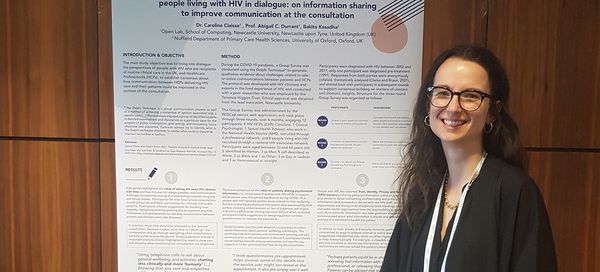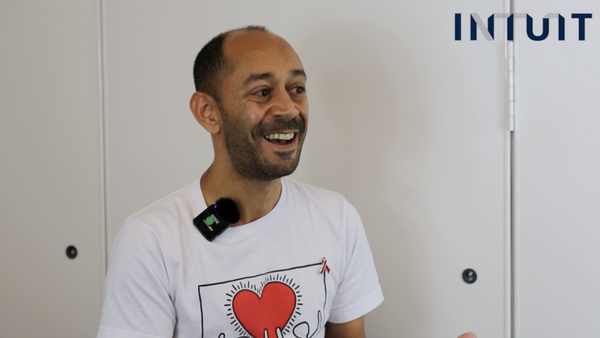News
Reflections on representation for communication design and visual identity
Reflections on joining the project by Caroline Claisse, Research Associate in Design at Northumbria University:
I have been invited by the team to reflect on a couple of events that shaped some of my thinking so far. Firstly, we have been working for the past month towards the launch of the project and key to this was the design of a logo and visual identity for INTUIT. This task provided a great opportunity to explore and become familiar with the key themes and aspirations of the project. I felt inspired by visual communication archives such as the HIV Graphic Communication and a visit to the GLBT History Museum on a recent trip to San Francisco. I found interesting how symbols like the pink triangle and the ribbon were reclaimed or appropriated over the years for the communication of HIV/AIDS-related illness. I was particularly drawn to the red ribbon – a symbol of awareness, support and compassion that has been extensively used by charities and public health organisations. For me, the wrapped ribbon represents qualities of caring, crafting and being bespoke for an individual. It is about this one-to-one, face-to-face and personal interaction. I developed the logo to be evocative of the ribbon without being too literal. I used the idea of wrapping and unfolding as key features and drew lines to depict the texture of the ribbon. At this stage, it felt important to go with something that could be developed throughout the project and used across diverse communication and exhibition formats.

This first month of exploration led to the launch of INTUIT with a special film screening and discussion event to celebrate the life and work of academic and cultural activist Stuart Marshall who died from an AIDS-related illness. His film ‘Bright Eyes’ (1984) portrays the AIDS crisis and its misrepresentation by the British tabloid press in the early 1980s. The film was a great opportunity to learn more about the context of HIV/AIDS, its advocacy and research, and to reflect about some of Marshall’s ideas in the present. For me, what really stood out was how some things have significantly changed while others have remained the same. In the 1980s, people’s lived experiences of HIV were envisioned in the short-term whereas today, HIV is considered as a long-term condition. This raises interesting questions such as what HIV care means today in relation to aging and how can we think of well being beyond HIV, more in terms of quality of life, to encompass the social, psychological and emotional dimensions of people’s lived experience. Insights from the panel discussion also highlighted for those gathered how managing HIV, and talking about it with others, is an incredibly personal concern. People have different needs and preferences on discussing their condition in particular contexts, including when they choose when to talk about their condition.

The ways in which we consume and share information today are very different to the 1980s. The screening of ‘Bright Eyes’ emphasised in an uncompromising and almost visceral sense, the contemporary issues of misrepresentation and perception of HIV-related condition. Arguably, many of these still persist today.
In efforts to consider communication design for the INTUIT project, I have engaged with media representations of living with HIV, and historical perspectives on representations of HIV/AIDS. This has opened up an interesting space of critical reflection on the very pervasive ways in which design can address – and influence – social (and societal) challenges of living with HIV. The prevalent use of social media and data exchange in interpersonal communication is increasingly familiar in our current lives. Personal data sharing presents a specific context for communication design to meet the above challenges of representation, and is one that I am motivated to explore going forwards, designing from a person-centred perspective.


